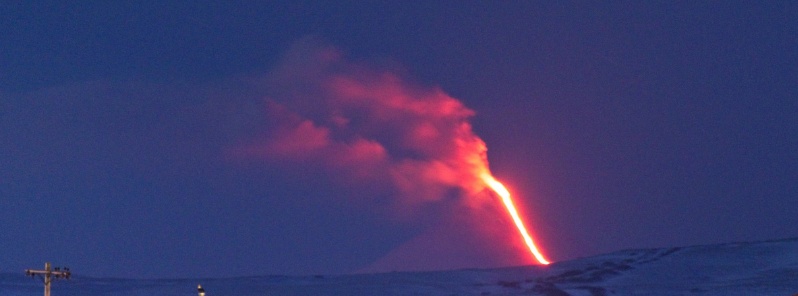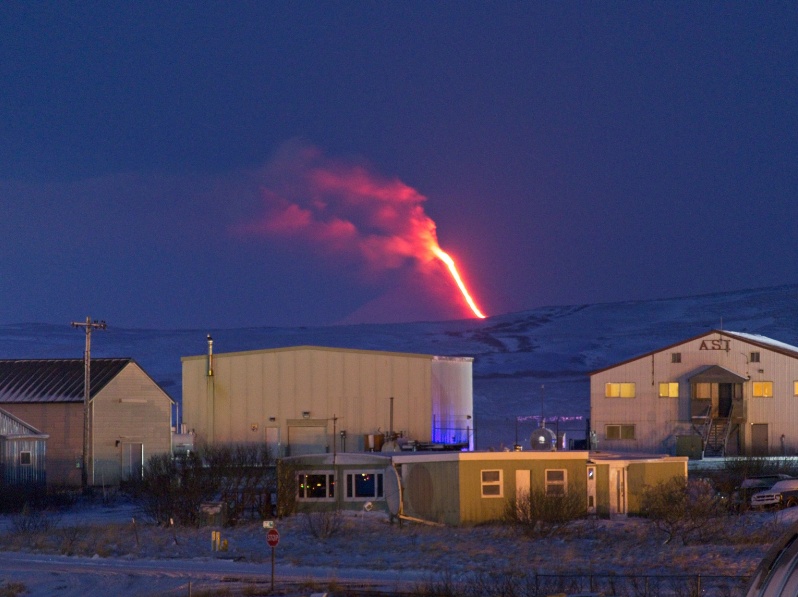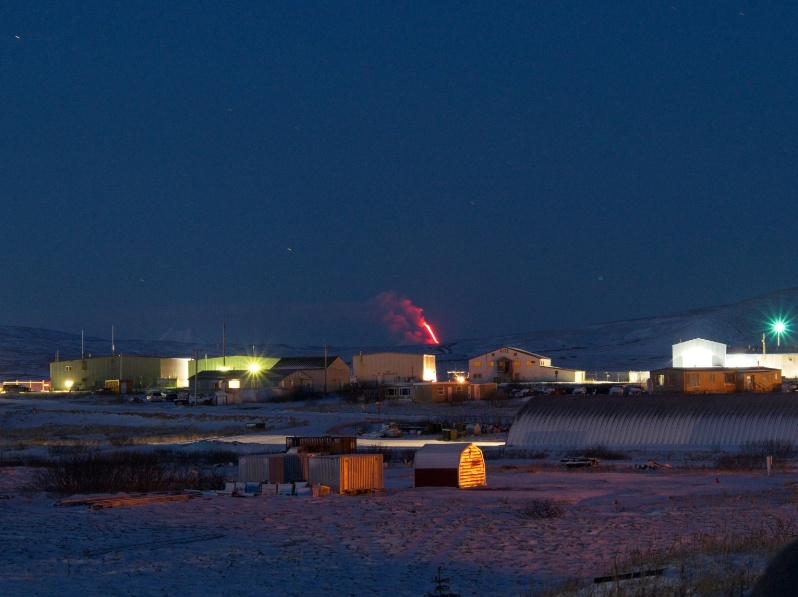Eruptive activity resumes at Shishaldin volcano, lava flows on the NE flank, Alaska

Eruptive activity at Shishaldin volcano resumed on January 18, 2020, with lava flows visible on the NE flank. The Aviation Color Code remains Orange and Alert Level Watch since January 7.
A weak plume, possibly containing a small quantity of ash, is visible in satellite imagery extending to the SW about 56 km (35 miles), the Alaska Volcano Observatory (AVO) noted in its daily update at 19:17 UTC on January 18. Seismicity remains elevated.
The Anchorage VAAC has released a SIGMET for the ongoing activity.


Images courtesy A. Merculief, USGS/AVO
The last significant eruptive activity occurred on Tuesday, January 7, when sustained explosive activity generated an ash plume that drifted over 200 km (320 miles) to the ENE, depositing trace ashfall on Cold Bay and King Cove and causing several flight cancellations.
AVO raised the Aviation Color Code to RED and Alert Level to WARNING in response to that activity and lowered it back to ORANGE/WATCH on the same day after the activity stopped.
The volcano has remained relatively quiet since then and seismicity was low for most of the week, AVO said.
However, the level of seismicity has begun to climb on January 16, suggesting that the volcano could be building toward another episode of eruptive activity. Elevated surface temperatures were seen in satellite images over the past week, but also seemed slightly higher on January 16.
Thus far, the eruption has produced lava flows, pyroclastic flows, and lahars (mudflows). There has also been minor ash fallout on nearby communities, though ash emissions for most of the current eruption have been restricted to the flanks of the volcano and altitudes of less than 4.6 km (15 000 feet) above sea level.
As shown by the January 7 event, more powerful explosions could occur with little warning and produce higher ash clouds that may pose a hazard to aircraft, AVO said.
January 18, 2020, Shishaldin Volcano, Erupts Shishaldin Volcano, Alaska #volcano #shishaldin #alaska #jan182020 Shishaldin volcano in eruption, January 18, 2020, as viewed from Cold Bay. Photo courtesy of Aaron Merculief.
Webcam Images by Volcano Time-Lapse Jan 18, 2020 pic.twitter.com/NStHOJKttA— Volcano Time-Lapse (@DavidHe11952876) January 19, 2020
Related articles:
Strong eruption at Shishaldin ends, Aviation Color Code lowered to Orange, Alaska (January 08, 2020)
Sentinel-2 provides evidence of increasing eruptive activity at Mt. Shishaldin, Alaska (December 28, 2019)
Geological summary
The beautifully symmetrical volcano of Shishaldin is the highest and one of the most active volcanoes of the Aleutian Islands. The 2857-m-high (9 379 feet), glacier-covered volcano is the westernmost of three large stratovolcanoes along an E-W line in the eastern half of Unimak Island.
The Aleuts named the volcano Sisquk, meaning "mountain which points the way when I am lost." A steady steam plume rises from its small summit crater. Constructed atop an older glacially dissected volcano, it is Holocene in age and largely basaltic in composition.
Remnants of an older ancestral volcano are exposed on the west and NE sides at 1 500 -1 800 m (4 920 – 5 900 feet) elevation. There are over two dozen pyroclastic cones on its NW flank, which is blanketed by massive aa lava flows.
Frequent explosive activity, primarily consisting of strombolian ash eruptions from the small summit crater, but sometimes producing lava flows, has been recorded since the 18th century. (GVP)
Featured image credit A. Merculief, USGS/AVO

Commenting rules and guidelines
We value the thoughts and opinions of our readers and welcome healthy discussions on our website. In order to maintain a respectful and positive community, we ask that all commenters follow these rules:
We reserve the right to remove any comments that violate these rules. By commenting on our website, you agree to abide by these guidelines. Thank you for helping to create a positive and welcoming environment for all.